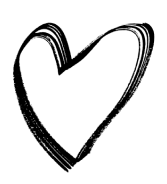Five Streams of Income at 21. How Ecom King Earns $8,166 a Day
At just 21, Kamil Sattar has set up five different streams of income. In this video, he takes us through his journey of how he started each and every one of them. He also talks about his motivations and mistakes made along the way. And stay till the end because he breaks down his profit numbers.
Jessica: We'll never see this total room makeover that I have to pull off so that we've got enough space between my couch and the light source. Here's what has to happen. I have to take all this junk and move it over here, and then you see all that pretty stuff in the background. But actually, I don't work here. I work right over here with multiple liquids always at hand. Anyway, let's talk with an entrepreneur.
Kamil, it's great to meet you.
Kamil: It's a pleasure to meet you as well, Jessica.
Jessica: Okay, now that's about all the intro I want. I'm actually going to start with the most interesting question and then we'll work backward from there.
Kamil: Okay, go ahead.
Jessica: With your five streams of income, how much money on average do you make per month?
Kamil: Per month in revenue, $245,000. In profit, we're looking at around $37,000, $38,000.
Jessica: That's incredible. That's actually... You hadn't told me that beforehand, so I wasn't prepared with a poker face for those numbers.
Kamil: That's why I thought I'd tell you now, to see the real reaction.
Jessica: Yeah, and I loved... First, we were going with the revenue, and I was like, “Smart, smart, no one says profit,” and then you went for it, you showed the profit, which is really important because otherwise a lot of people in the comments would be like, "Yeah, but how much in profit?" And it's like, "Okay, you're gonna sneeze at over 30K in profit on average," like, you've obviously figured something out.
Today, what I wanna do is unpack for the audience how it is you got to that number and not just in a biographical sense. I really want you to share along the way, what you've learned, what mistakes you've made, so that someone who's maybe 18 right now is like, "I wanna do that instead of working at... " Like, I don't know, "Staples," can take these lessons and start to build that future.
Kamil: Yeah, of course, I'm down for it. So go ask me anything. I'll be as transparent as I want. You just go and ask whatever you want.

Don’t wait for someone else to do it. Hire yourself and start calling the shots.
Get Started FreeGetting His First of Five Streams of Income
Jessica: Okay, cool, so let's start at the beginning. How did the first of the current five streams of income come about? And why? Were you working? Were you a student? Why even get started on this road?
Kamil: Okay, so I think I was actually really blessed with how everything planned out for me. So my first... Well, the last job I had before I quit working a nine till five was at JD Sports. Now, JD Sports is like Footlocker in America, it's the English version of it.
So I was all around shoes, sneakers, fashion and whatnot, street fashion, and I had a really big passion for high-end luxury goods like Bates, Supreme, Christian la Rue, Balenciaga, and I always wanted to have these things. But I couldn't afford them, because I was so young, I was only 15,16 at the time.
So I really couldn't afford these things that were going for $500, $1,000.
So then I thought, you know what? There's a big demand at the moment for people sourcing high-end luxury goods for celebrities because as you know, celebrities, people that are in the public face, they don't have much time to go out there and source high-end goods or whatever. They have to go to people, it's like personal shoppers to go and get that stuff for them.
So I thought if I put the two together, if I become a personal shopper, high-end luxury reseller, and go for the high-end target market, then I can have all these shoes I've always wanted, get a feel for them, take photos with them, live the dream lifestyle, and then pass them on later and make a bit of money doing it. So that was the first business that I did. It was the buying and reselling high-end luxury goods.
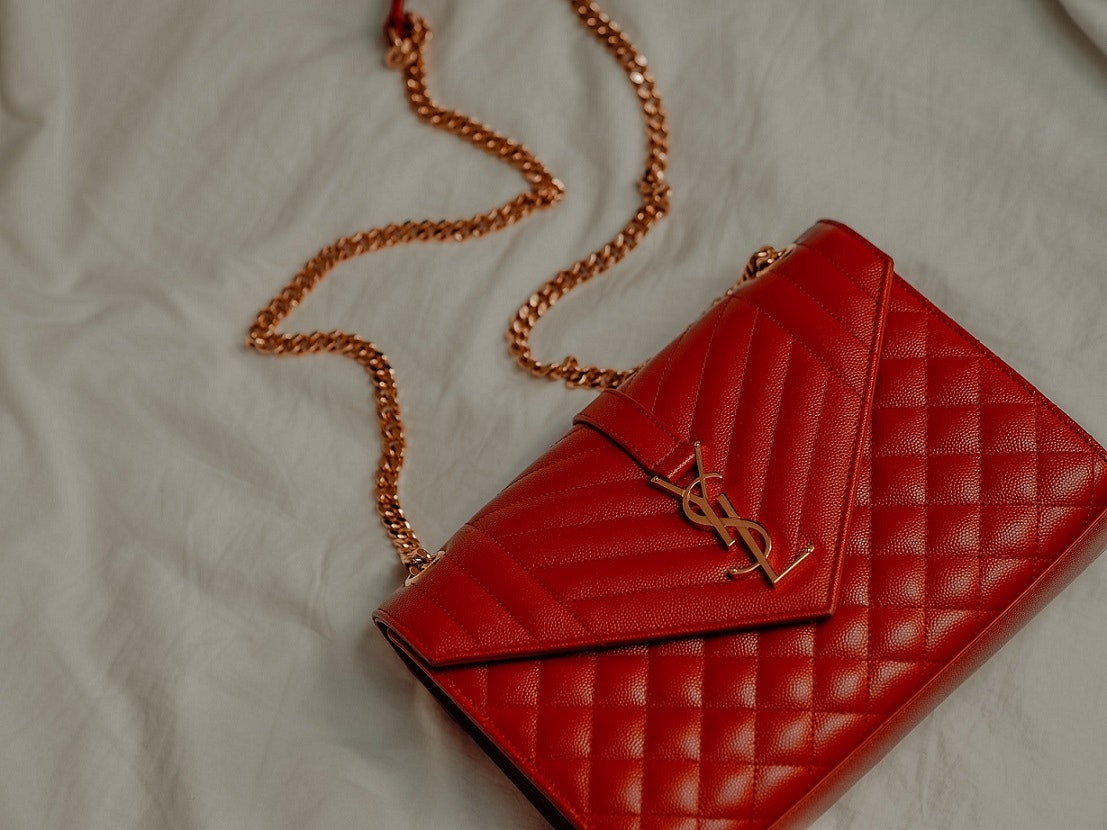
Jessica: Now, when you were starting this business, I'm imagining your coworkers at JD Sports probably have the same attitude as you. They're probably like, "Yeah, I wanna wear luxury goods, too."
What's the mindset difference? Why did you go on and start that business, in your opinion, while the other teenagers understandably were just like, "Nope, can't afford it. That sucks, I'll just look at it from afar."
Kamil: Yeah, because the other guys, without sounding rude, didn't really have a business kind of brain. I actually worked with one of my best friends. One of my best friends was working with me at JD, and I told him the whole idea, and he was like, "You know what, bro, I'll let you go and do that. That's not for me."
I think 'cause they're not into the whole, you have to spend a lot of money getting the products in and then communication, I think they just didn't have that entrepreneurial mindset to go and take it to the next stage. And they were like, "You know what, the wages I make from work, I'm gonna keep that and spend that and going out for food, drinks, partying."
They didn't think of saving the money and reinvesting it. They didn't have that mindset.
Jessica: So you were saying no to a lot of things, which is painful when you're a teenager and there are tons of cool stuff going on, but you were saying no to a lot of that because you had this idea and you knew the only way to get capital for it was to make some sacrifices in other parts of life.
Kamil: Yeah, 100 percent. Whilst my friends were going out partying in clubs and spending their weekly... 'Cause we were getting paid weekly then, on going out, I was saving that money up and saving it up so I could afford my first range of luxury goods to then sell on.
Jessica: Okay, that's cool. So I would definitely point that out for our audience as one of the big differentiators between the successful entrepreneur and others right off the bat, is this ability to sacrifice in some areas of life to go after that big dream, especially when it comes to money.
Kamil: 100 percent.
Jessica: Okay, so you got this off the ground. Were you in touch with celebrities and stuff?
Kamil: Yeah, so in the UK, I think not many people worldwide will know these people. But I was in touch with football players from local areas where I'm from, younger guys, so the youth, so the youth teams I was in touch with, and then they would pass me onto the older lot in the football team.
So then I would sell to them lot. And the thing that I learned a lot about buying and reselling was networking with people and then I would start working with people that were seen on TV shows in the UK, and I work with those, and I did send your team some photos to put on the video as well.
Jessica: Okay, we'll show a nice little collage of that right now. So this is one of your current five streams of income, but as I'm talking to you right now, I know this hasn't become your major stream of income. Take me through that transition point. When did you decide, "Okay, I wanna do something else, put my energy elsewhere?"
Transitioning to Income Stream No. 2: Dropshipping
Kamil: Yeah, okay. So I was doing it for a good year, full-time, properly and making it my, that was my full-time income. At the moment, it's not, I've made it more of a hobby income, and I'll tell you why a little bit later on.
But I learned a lot of things like Instagram, how to leverage Instagram, how to grow Instagram, how to find influencers, how to contact people through Instagram, and I thought at the time with the buying and reselling, there were a lot of problems, like a lot of competition, a lot of companies trying to shut you down and force you out of doing it, which was horrible.
There were just problems with buying it retail as well. So I was looking for all the business models that I could use to make money because the buying and reselling one was going through a horrible period when I was in there making quite a good amount of money.
So then I was looking for other ways to make money online without having to invest lots of money.
And back in 2017, I came across Shopify dropshipping, so that's when I first started my first Shopify dropshipping business. And the reason why I went for Shopify dropshipping was one, low barrier to entry, number two, I had skills building a website, I had skills in messaging Instagram influencers as well, so I thought, why not put this knowledge into another business model?
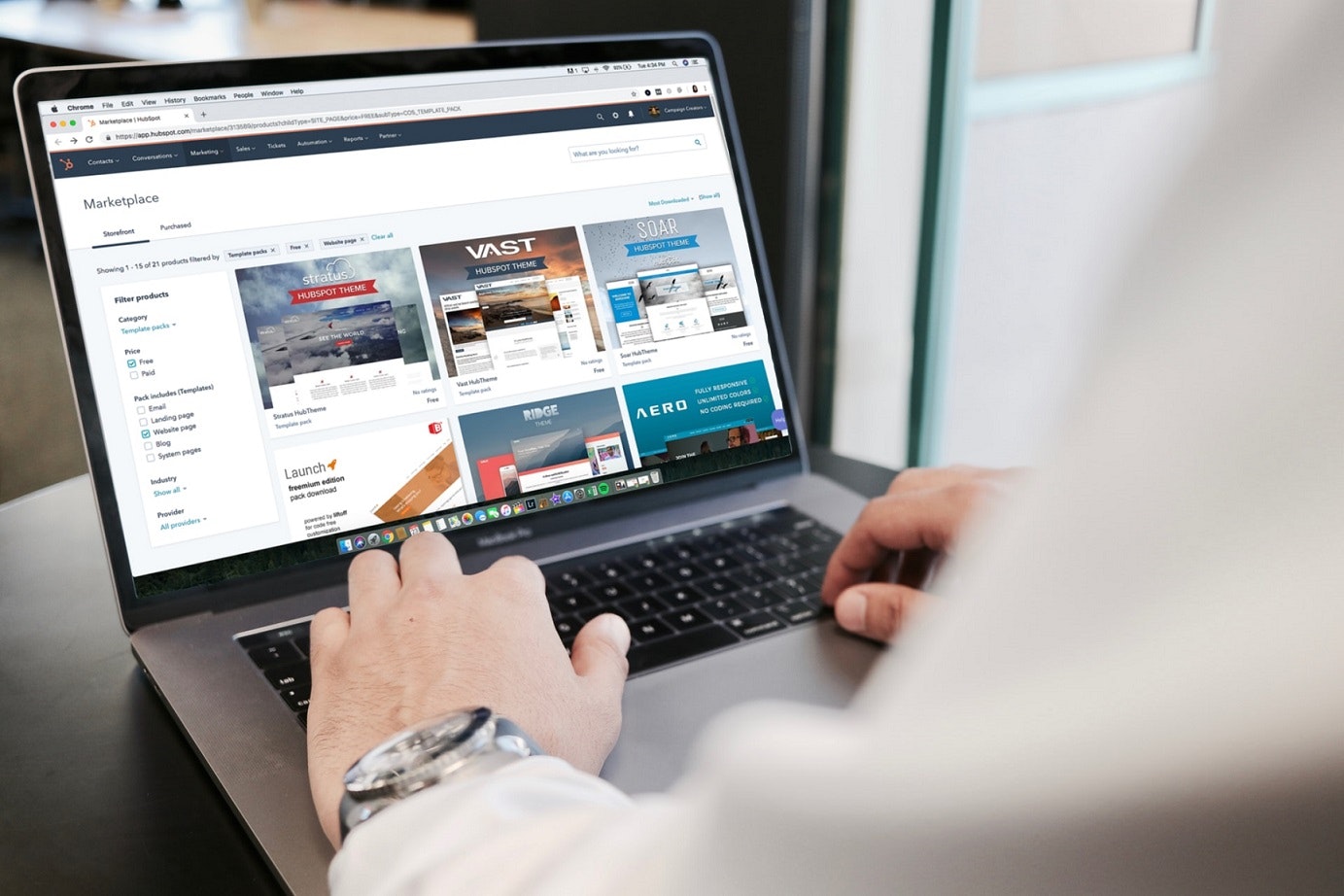
Jessica: I like when you're talking about that transition, one thing that I noticed is you have this self-awareness of, "Okay, what skills did I build in this project and now what skills can I add onto that to explore something new?" So you had the Instagram skills and you built that up.
One of the things I have to say, I started at Shopify in 2017 and when I started, people were already saying dropshipping is saturated. So I love it when I hear people who are like, "Oh, I did not open a Shopify store until 2017," and now I'm interviewing you on YouTube. So it's crazy how much you can do while other people are complaining about market saturation.
Kamil: People are complaining about it today, hey saying in 2020, Shopify dropshipping is dead, but then in five years time, they'll say the same thing, yet I still thrive.
Jessica: Because it always gets clicks, guys. On YouTube, that's what we're doing... Like people are just going after your clicks and they know you'll click on that 'cause you're afraid. Don't be afraid, we're here for you, like Kamil's here for you, Oberlo's here for you, we've got you.
Kamil: Even till this day, like Shopify dropshipping... My $245,000 in monthly revenue, that is still Shopify dropshipping/ecommerce selling products online is still my main source of income, so when I break it down to you later, it's still my number one way of making money.
Jessica: Oh, you're gonna break it down for us later?
Kamil: Yeah, I'll break it down for you as well.
Jessica: Incredible. Okay, well, let's keep on this journey. You start dropshipping with Shopify in 2017 and now this is income stream number two.
Kamil: Yeah.
The Motivation Behind Having Multiple Streams of Income
Jessica: You had talked about wanting to make money. But I always wanna get a little bit under this motivation. Did you just wanna be able to afford those Balenciagas, the one that looks like socks, or did you have like, did you want freedom? What was the motivating factor here?
Kamil: Okay, so I come from a humble background where we didn't have a lot of money, parents came from Pakistan, and we were living on a council estate, we didn't have much money, and I would see some of my friends, I'd see people online living nice lifestyles, and I wanted to give my future children a life that I wish I could have had.
So it's all about legacy building, thinking of the future future, my grandkids, and their grandkids, and that's why I'm still today trying to build as much as I can for the generation of my name and keep it going.
So the motivation came from seeing my mom and dad struggle, especially my mom.
My mom has been made redundant now, I think about 11 times. It was horrible seeing that happen, so it was just to really give my family a consistent and secure income, really, not even...
For me, it's not about the flashy things as for those that know me or so to go and know me, I don't have anything that's luxury anymore, I don't own anything, I don't have any nice fancy car, I don't live in a fancy house, I'm very basic, but as long as I got the money to secure my family, future family and the future family is what my personal objectives are.
Jessica: I'm so glad that I asked that because that's such a, I mean just hearing you tell that made me feel a little like, "Wow, that's powerful stuff." That's way more meaningful than just like, "Bro, make money online."
You're changing the lives of the family to come, I'm sure you've already started changing the life of your parents now knowing that it's such a relief for parents, I think, to know that their children are doing well and you've taken that into your own...
Kamil: Well, I'm glad you said that because my mom got put on furlough from her job and now she's been told that she's gonna be made redundant because they don't wanna carry on a furlough, and I said, "Look, mom, don't worry, if it takes you three months to get a job, I'll give you as much money as you need, no worries."

Jessica: That's incredible. She's lucky, she's lucky to have you and to have... You're unique in that you are a long-term thinker, a lot of people get into dropshipping and then they're like, "I didn't make a sale this week, dropshipping is dead."
But you started the business at JD Sports, you said no to things 'cause you had this business in mind for the future, you're doing all this stuff with a very long-term future in mind, how do you resist short-term thinking?
Kamil: I think the key to it is to have short-time goals, but don't make your short-term goals massive, make them small little things, and then have a big long-term goal. Because if you have your long-term goal as your short-term goal, you will never stay motivated to get things and so it's all about small achievements.
Small wins will lead to massive gains and you have to understand that.
So for example, I always wanted a Rolex, so I thought, "Well, that could be my short-term goal," so I got my Rolex and then my next big thing was getting a house and so forth, so you have to have short-term and then real long-term big goals.
Jessica: That's great advice. Otherwise, if you have that house as your short-term goal, you don't get it and you're like, "This sucks, this isn't worth the work, I didn't get my goal." And you cut yourself short from what could have been a long-term success.
Kamil: Of course, yeah.
Income Stream No. 3: Mentoring
Jessica: Okay, let's move on to income stream number three and take me again through the transition point. Dropshipping is going well, you have two income streams, why start another?
Kamil: Yeah, so after the dropshipping did really, really well, I was in lots of different Facebook groups on Facebook, and those that followed me since day one in terms of personal brand will know this, I was in loads of different Facebook groups, ecommerce, Shopify, dropshipping, and people would ask questions.
And I'd always be that guy if I've got spare time to go and answer them and I wouldn't just answer them short, I'd give people paragraphs of help for free and then I get most people messaging me like, "Kam, you're amazing and you gave me so much value, do you offer like mentorship or consultations?" I'm like, "No, I don't."
And then they said to me, "Look Kam, you should think about doing it." So then I thought, "Hold on a second, I've got a bit of free time now and again, so why not do some mentorship and the way I learned everything was from mentors."
And shout out to Ashley and James they're my two first mentors that really helped me and I understood that mentorship is what got me to where I am today. So I thought, why not offer mentoring and I know what I'm doing.
And something that is important for those that are thinking about maybe going down the mentorship consultancy route is, don't make one chance at success make you think you can do it. If you've got a Shopify dropshipping store and you've only done 100,000 as a one-off, don't then go and think you can then do it as a mentor.
You need to be hitting this consistently every couple of times a year.
So I was doing it consistently a few times a year, and I thought, “You know what? I think I'm in a position now where I can start giving people mentorship,” and now after a year, we've done some amazing things for people.
Jessica: I love that this income stream actually didn't begin as that. It really began as you being generous with your time and your knowledge in a community that had helped you, and you weren't planning on it becoming an income stream but really the demand for it, the market came to you.
Kamil: Yes, after those Facebook groups, people were just going crazy 'cause like I said, I remember, I might have some photos I can send you, but I remember when I'd leave comments and they'd get 200 likes in the thread of the comments on Facebook and people just wouldn't leave me alone.
And then I made my own Facebook group, and I had my own Facebook group and they’re like "Kam, you need to now make your YouTube channel." So then I made my own YouTube channel.
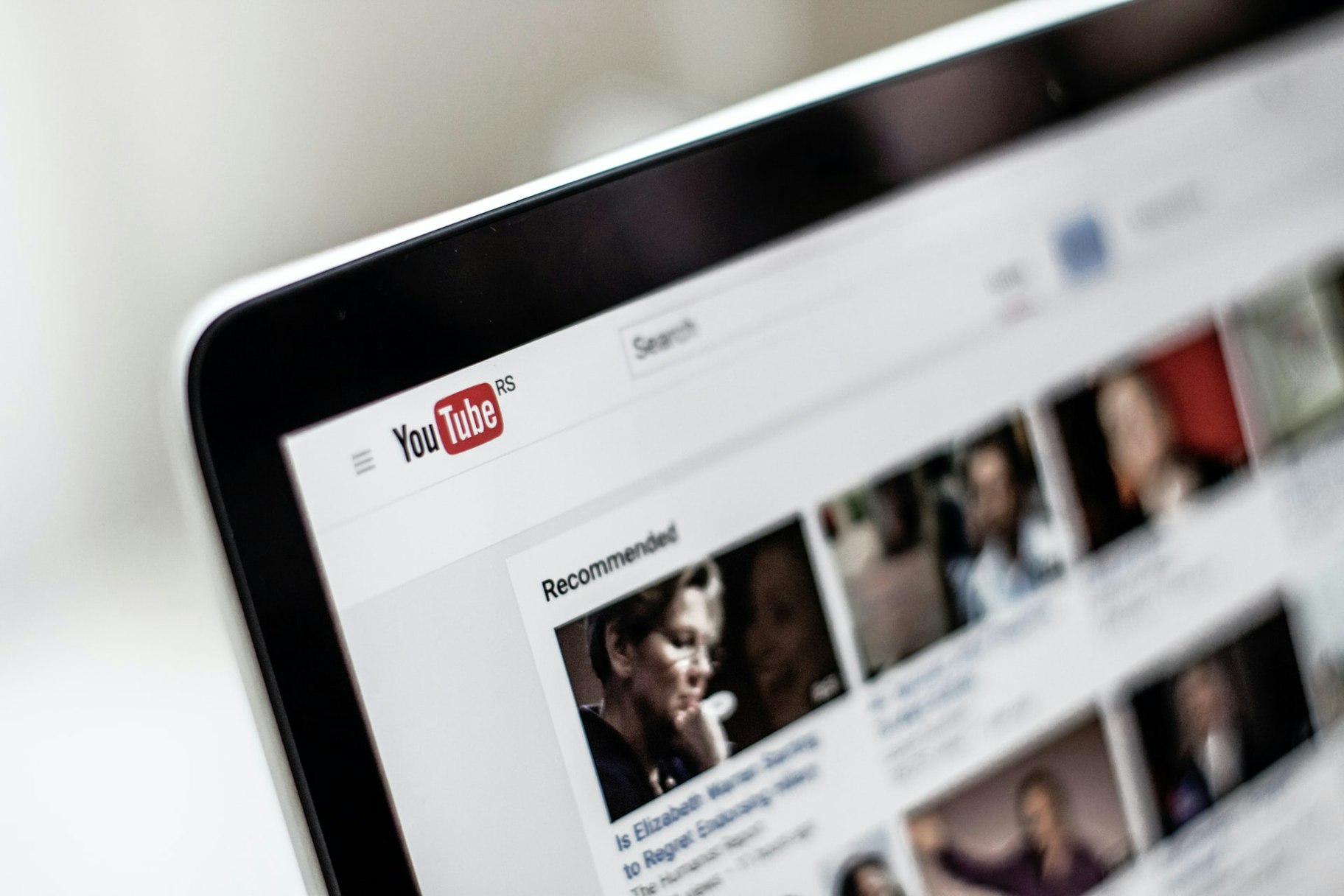
Jessica: When the people were first like, "Hey, can you mentor us?" Why did you ask them for money? 'Cause I can see some people being like, "Well, I'll just help them out. I've been doing that on Facebook for free anyway. What's an hour’s phone call?" Why make it a more structured thing?
Kamil: I think what made me make it more into like a business now is because of the opportunity. But I feel like in the market today, there are not many people that offer really good service and I thought, "Kam, whatever you do, you do it to your best capability."
And I thought, if I bring that now to the service based mentoring, I can really help a lot of people out because at the time there was just a lot of trash out there.
Jessica: Yeah. One difference between the first two income streams and this one that I'm noticing is the first two income streams you could have started at any time, like you had the Instagram knowledge from income stream one that helped with income stream two.
But we know a lot of... Both of us probably know a lot of ecommerce entrepreneurs that don't have Instagram knowledge, and they still do just fine. But the mentoring you couldn't have done, you couldn't have done successfully without at least one of the first two income streams already in place. So I'm seeing already, there's kind of like a flywheel that you've built over the years.
Kamil: Yeah, like I said, as soon as I got knowledge from Shopify dropshipping and my personal buying and reselling, I had tons of knowledge and I was in the game then for two years and I've made over seven figures at that time, and I was helping people out for free.
And I just thought, "Kam, you're in such a position now where if you turn your knowledge into more of it," because teaching people is a skill itself. So you have to get very good at teaching people, so I thought if I help people for free, that'll get me good at teaching people.
Then I thought, "Now I'm a good teacher, now I can start charging people money because at least they're gonna get a good service."
Entrepreneur… or Not?
Jessica: Yeah, three birds perched on my balcony as you were talking, I feel like they're hearing your story and they're like, "Oh my God so interesting, I wanna hear more." And so I looked up and they're like... I wanted to...
A quick aside, we are having an internal debate at Oberlo about whether people like you refer to themselves as entrepreneurs. 'Cause we can't decide whether that feels too stuffy and formal now and if it does, what do you call yourself?
Kamil: I think the entrepreneur word itself has been flowing around way too much and not many people understand the definition of an entrepreneur. An entrepreneur is where you do something at your own risk and you try and make money from it and whatnot. And I feel like...
I wouldn't say I'm an entrepreneur, I would say I'm not. I would say I'm a marketer, I would say I'm a digital marketer.
And the reason why I'm saying that is because I am very... Every company I own, I don't do... The only position I am in my... All the companies I own, I just do marketing. With my Shopify dropshipping business now, I only handle the marketing side. With my mentoring company, I handle the marketing side, from my web development company I handle the marketing side.
Everything that I own at the moment, I just I'm on the marketing side of it.
Jessica: That's fascinating because... And I'd be curious if you're watching this, leave a comment and let us know whether, like, do you call yourself an entrepreneur or something else? Because the fascinating thing about this is, I call myself a digital marketer. But I grew up... I'm a bit older than you and I've always been like, "Well yes, because that is my job title at the company."
You've kind of disaggregated the company side of it and you're like, "Yeah, I'm a specialized professional, I'm a digital marketer." But maybe for the next set of... Not entrepreneurs or but whatever, it's more about, just because you're a specialized person doesn't mean that you work for a company and vice versa.
It just blows my mind. I'm still not sure what to call you all. But I'm enjoying the ambiguity. Like y'all are making some new categories that we don't have words for yet.
Kamil: Exactly, and that's why I'm saying, although I own companies, I don't even feel like I own them because I feel like I'm just a marketing manager at the company.

Income Stream No. 4: YouTube Channel
Jessica: Yeah. Okay, now I'm gonna guess that your fourth stream of income is YouTube, because we're both YouTubers, and it seems like that's where mentorship led you.
Kamil: Yeah, then it was the YouTube channel, yeah.
Jessica: Tell me about how much you make with YouTube and whether you think it's worth it 'cause speaking from my experience and I have a team, it's hard work putting out even just one relatively simple video a day or like a week.
Kamil: Yeah, so at the moment, based in the last few months, on average, I've been doing around about $5,000 in YouTube revenue. The last two months I've been doing... So this month and last month, so June and May, I hit $10,000 in revenue for those two months, which is amazing, I can't even believe that's even possible.
Jessica: That's from YouTube. That's not just people becoming your mentees.
Kamil: No, no, no, so just purely off YouTube, like Google Ad revenue just from June and May, I've done $10,000 and I'll send you the print-screen to show it. And it's insane because I didn't think YouTube could pay that much money and...
Jessica: Me neither.
Kamil: I didn't think it could. I was like, "No, hold on a second." But then I realized what YouTube revenue is about, it's about CPMs and because of the industry that I'm in, business to business, the CPMs are very high.
So, I'm making more money than channels with millions of subscribers just because the CPM is so great, and yes it's insane.
But when I first started YouTube last year, I was only making... When I got monetized, only a couple of $100, a couple of thousand, it's only very recently, like the last three, four months, it's been going crazy.
Jessica: And you've gotta put in a lot of work before your account even gets to the point of being monetized.
Kamil: Yeah, you have to have 1,000 subscribers and I think 5,000 watch hours to then get monetized, and then even after that, you have to then put loads of work in. Like I do one video a week on my channel, and I even struggle to do that, I'm like, "Oh my God, I don't think I'm about to do it this week 'cause it's just... I haven't got enough time."
People don't realize the kind of planning you have to do, the recording, and when you make lots of mistakes, the editing. So it's a very long process having a YouTube channel, very, very hard to do.
Jessica: Unlike your other side hustles, which it sounds like you were able to jump into and start seeing profit relatively quickly. But it sounds like with YouTube, unlike the others, you really had to put a lot of work in, and you're still putting a lot of work in before you started to see returns.
Did that bother you? How did you switch mentally from like, "Okay, we're doing this new income stream, but the income's not coming for a while."
Kamil: No, no but the YouTube thing, I never wanted, I never... When I just started YouTube the goal wasn't to make money, the goal was to make a big impact on the community in dropshipping, the... Like I said, the first thing that I was thinking about is, "How can I become the new face of dropshipping, how can I innovate, change how dropshipping is and make it this new thing."
And I thought, "I don't care about the money, all I care about is people knowing me for the guy that is giving people real value on YouTube and actually teaching them the real stuff they need to know, none of this fluff,” and that was my goal then. I'm seeing it become what it is now. We've hit 65,000 subscribers, we've gone up by 30,000 in two months. It's crazy.
Mistakes Made in His Journey To Having Five Streams of Income
Jessica: Amazing. So you've described four income streams, and the way that you described it, it sounds like everything just flowed beautifully into the next, you built the skills necessary for the next income stream and you had the money from the first income stream.
So I wanna talk about mistakes because you can't get to where you are without having made some mistakes. Or people who want to have their own streams of income, what mistake or mistakes did you make that you would say, "Hey, if you're starting out, pay attention to this and don't do what I did."

Kamil: Okay, yeah, so the first one is, don't listen to anybody outside of your network that doesn't own a business. For a lot of people, especially me, I had a lot of people like my family, my family friends being like, "Kam, you don't know,” like, “You can't be doing this."
Yet, they don't own one business so why are they giving me advice on it? Don't listen to your friends, their friends, and whatnot. If they're not doing what you wanna do or what they've achieved...
As in, if they've not achieved what you want, then don't listen to them, especially being very, very young.
Another thing is self-doubt because I don't have any grades from school, I was always like, "Am I really doing what I should be doing? Am I doing the right thing?" So I had a lot of self-doubts, you just gotta trust the process and trust what you're doing as long as you back it up with knowledge and factual checks and due diligence.
Another thing that I would say is fear is another big one, like being scared to invest money, being scared to do something new, being scared, I think fear is another big one.
And then the next one that I would say is procrastinating was another big one for me. I'd always just daydream. Like two days of the week where I should have been working, I'll just be on my bed just thinking about things because I just didn't know what I was doing.
Even before entrepreneurship, I suffered from bad anxiety, bad depression, so that was very hard going through my journey, and I think those are the ones that are the biggest mistakes.
And another thing that would say in terms of dropshipping wise, 'cause that's the main one for me, I would say the biggest dropshipping mistake was trying to follow what everybody else was doing.
Jessica: There's so much of that, that rings true. So, many times when people are starting businesses, they talk to their friends and family. But their friends and family are just afraid of them, they just wanna protect them and they're like, "Don't take that risk. Don't do that." I think it comes from a good place, but it can really cut entrepreneurs short in their path.
And then when you talk about not following the... When you talk about not doing what everyone else is doing with dropshipping, this really rings true because we have Oberlo 101, our dropshipping course, and we hope that it gives people the foundations to get to their first sale.
But the truth is, if everyone follows Oberlo 101 and thinks that's gonna take them to 50k, they're wrong because the entrepreneurs who make it big are the ones who say, "Okay, I've got the foundations, what if I market on Snapchat?" They kind of go in a different direction...
Kamil: Innovation, that's the key. Innovation, and that's where people go wrong. With me, I do Twitter ads, I've got a Twitter success story with you guys on your success story blog. And not many people do Twitter. It's all about innovation.
I got good grounded from my mentors, my seminars, from my online training, and then I innovated on top of that, I learned the foundations, I learned how KPIs work, Facebook works, all that kind of stuff, Shopify stores, all that. But what can I do to innovate on what nobody else is doing, what advertiser streams is nobody else using?
TikTok, Twitter, things like that, Bing and that's where the real people make a lot of money.
Book Recommendations

Jessica: Yeah, just one more question I have to ask this 'cause I love asking this question before we get to your last income stream. Would you recommend any books? It sounds like you're someone who's done a lot of reflecting on fear and motivation. Were any books really critical for you?
Kamil: Yeah, a lot of the books that I read were Think And Grow Rich. And that's where Napoleon Hill goes around interviewing lots of successful people. Very, very good book.
Rich Dad Poor Dad is a very good book for those to read that are coming from a corporate job. If you're coming from a corporate background and you can't get your mindset into the business background, definitely read Rich Dad Poor Dad, it will help you transition through that kind of process.
Jessica: I don't think I've read Rich Dad Poor Dad, but Napoleon Hill's book is incredible, I agree with that, just even listening to the words is motivating, like Napoleon is...
Kamil: Yeah, honestly, for those that need to read a book asap, it has to be Napoleon Hill, Think And Grow Rich.
Income Stream No. 5: Web Development
Jessica: Okay, finally your last stream of income, for now, I'm sure you're gonna add ten more in the next couple of years, but for now, what is your fifth stream of income?
Kamil: So, my last income stream at the moment is web development. So I am now a co-owner of the web development company called Launch Doors and what we do is we just basically create Shopify dropshipping stores, we commerce dropshipping stores for people, revamp them and that... Now, again I'm not a web developer...
Jessica: I was just gonna say. So why didn't you start a marketing agency if you're a marketer? Why web development?
Kamil: Yeah, so the reason why I went down the web design route was 'cause I've got a very creative side to me. I don't know what it is, but I'm very creative in what I do. I've got very crazy ideas in my brain, but then to put them out into a paper or a website is hard. So then I'll hire the talent that can do that for me.
And the reason why I opened a web design company for dropshipping specifically was that I saw a big gap in the market on what people are not making on their website and thought if I've got the right team in place, I can get them to give people what they need to take their store to the next level.
So I thought I've got all these amazing ideas, I know what's perfect, I just need those people that are in their own profession, web design, web development, to do that for me, and that's the reason why I did it.
Jessica: This is cool because I imagine if there's someone in the audience who maybe they are, they don't really have the creativity to go off the well-trod path of dropshipping, but maybe they have the capital and other experience, they could go to someone like you and say, "Okay, I don't really know how to innovate here, can you help?" and you have kind of this company to be like, "Yeah, that's my strength. I can help with the creativity part."
Kamil: Yeah, 100 percent, and that's what I'm saying like I've got a brain full of ideas, creative ideas for web design, and that's what I give to my team to go and then put into the real deal, basically.
Jessica: Didn't you say you had a lingerie company?
Kamil: Yeah, so my partner has a lingerie company and I'm gonna send you guys some photos because it's all hand-done, not mass-manufactured, all hand-done, and my partner is one of the most talented people I have ever met in my life.
The kind of work she's done, the kind of design she's made, it's a new company, but we're just getting designs of the new range out and we're looking to take it real high street like Victoria's Secrets and Boux Avenue and stuff like that. But yeah, it's honestly insane.
Again, with the lingerie company, I'll be doing the marketing side, she'll be doing the designing.
Breakdown of His Five Streams of Income
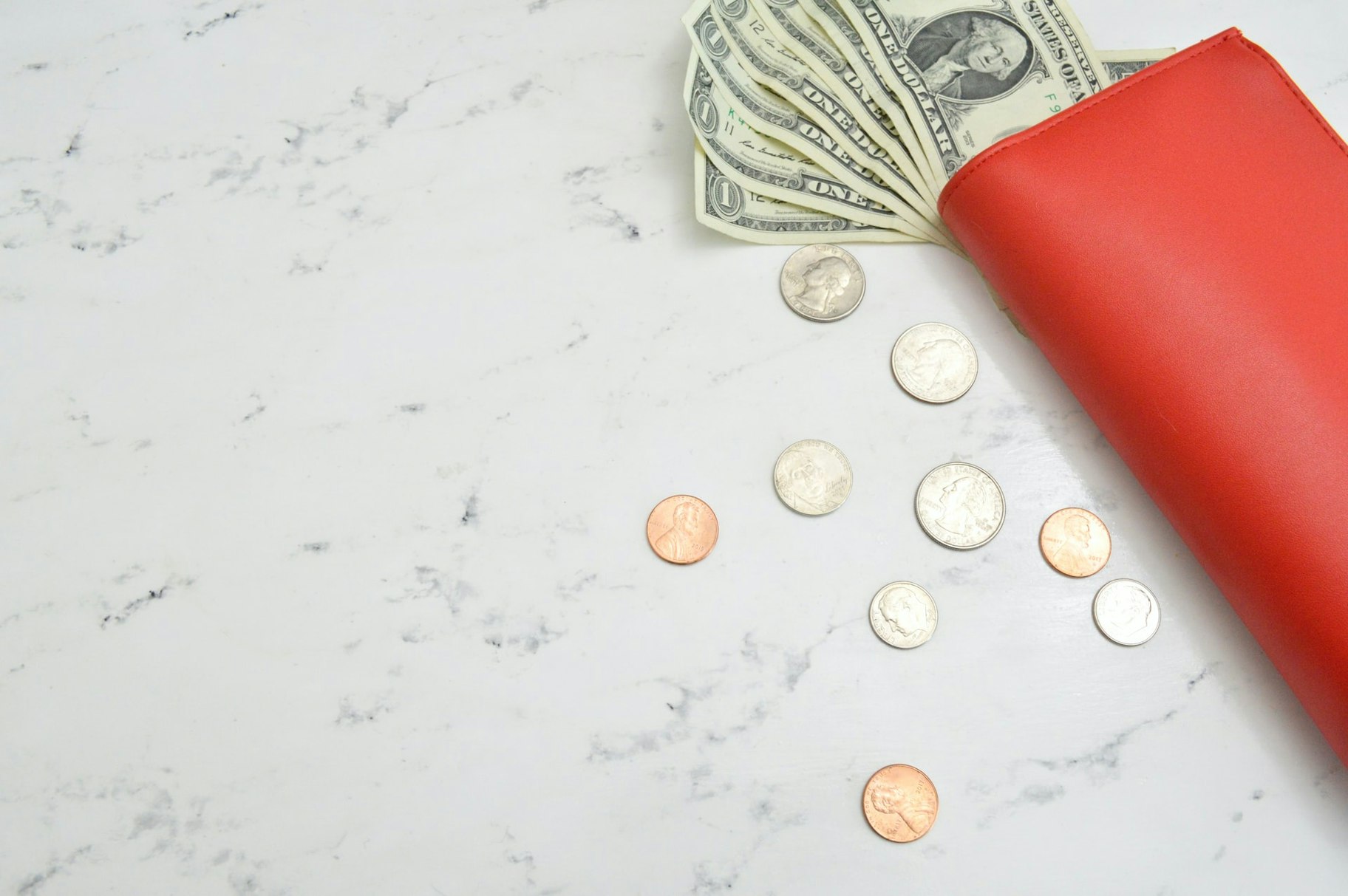
Jessica: Really cool. Okay, and you had promised to tell me this. What's the breakdown? So we know how much you're making on average and how much the profit is, which is incredible that you shared that, and so how would you describe this breakdown with your different income streams?
Kamil: Okay, so my income streams, so going from highest to the lowest, my first one and biggest one is going to be Shopify dropshipping/a couple of ecommerce product selling businesses.
And we're doing $200K a month in revenue with a net profit a month of $36,000, and yearly, that does about $2.4 million.
Jessica: Wow!
Kamil: And then my next biggest income stream is going to be my mentorship company, we do $20,000 a month in revenue with a net profit of about $10,000. Then my next biggest income stream is going to be my web design company, which will be $10,000 a month in revenue and $2,000 a month in net profit, and that's because it's different owners and co-owners of the company.
Then another big industry that I have that I've been making a lot of money from is still my buying and reselling business. I'm doing $10,000 a month in revenue and around about $5,000 a month in profit and the reason why the profit's a lot higher with that one is that I just own that and that's just my profit to take.
Then the final income stream is the YouTube income stream and as I said, it's about on average, $5,000 a month with a net profit of around about $4,000.
Jessica: I don't think anyone I've ever interviewed has been so transparent about their numbers and it's amazing 'cause this gives other people an idea of what to shoot for and also, what's realistic in terms of revenue and profit.
I just have a nerdy question about your mentoring, what accounts for the overhead for the mentoring business?
Kamil: So with the mentoring business, there are eight of us in the company, and obviously those that also teach have to keep themselves a commission. So it's commissions, things like transaction fees, taxes as well, so all of those business models that I gave you the profit in, I'm talking about after taxes as well.
Is Having Multiple Streams of Income the Future?
Jessica: Okay. Oh, okay, great. This has been amazing. I just had, I wanted you to look into a crystal ball before we leave. Do you think this is how people are going to make their money in the future?
It's only recently that I've started to see people talk about multiple income streams and not just billionaires, but actually people are instead of having a job or having one startup, have multiple income streams. Is this the new normal?
Kamil: I think the future of creating wealth will be ecommerce, multiple income streams, not just any multiple income streams, or ecommence multiple income streams. And I think for those that are watching this, don't look at it and be like, "Oh my God, make loads of income streams."
Start with one, master one, then progress.
If you can't make six figures a year with one, don't even bother trying to get onto another one because till you master one, you cannot move on.
Jessica: Yeah, but if you can't make six figures a year with one in your first year, it's okay, like for some people, it takes two or three years to get to that point, it sounds like?
Kamil: Yeah, with ecommerce businesses, you're looking at a one- to three-year game plan, it's not a quick game plan. It's gonna take some time, and it's gonna take a lot of knowledge and testing really.
Jessica: Yeah, speaking of knowledge, I'm sure people are like, "Where can I get more?" Can you just share anything with our audience about how they can learn more about you?
Kamil: Yeah, so my YouTube channel, the Ecom King, I'm sure you'll leave it in the description. That's my YouTube channel, lots of amazing things on the channel. You can follow me on Instagram, @kamilsattarofficial, and they're just really the two main things that I do, I don't really do much more than that.
Jessica: Yeah, same for Oberlo. Well, actually we have a TikTok channel, which is going really well, so yeah.
Kamil: Oh, I didn't even realize that. I need to check it out.
Jessica: Yeah, check it out, and if you decide to get on TikTok, let us know, we'll do a collaboration there.
Kamil: Let's go.
Jessica: Cool, okay, well, then, this has been awesome and Kamil, I think we will have you on our channel again, so thanks so much for stopping by.
Kamil: Yes, definitely next time, hopefully in the headquarters of Oberlo, hey?
Jessica: Oh yeah. Well, we have no headquarters now.
Kamil: Do you not? So you're not gonna ever go back to the office?
Jessica: So it's, we're still kind of figuring that out, but Shopify went digital by default as of four or six weeks ago. So yeah, so it's probably more likely that I'm gonna be digital nomad-ing around. But maybe we could meet up somewhere in the UK, get a videographer to follow you.
Kamil: Yeah. You'll have to come to the UK, we'll have to get a little... We'll have to use... 'Cause you know the YouTube studio in the UK, they have a recording studio you can use.
Jessica: We don't need no stinking studio though, I think it would be a lot of fun if we can get someone who's really good with the camera to just follow us around. Let's have coffee, show me...
Kamil: Yeah, let's go to some...
Jessica: Show me your world.
Kamil: Let's go to some... There are some beautiful parks in London.
Jessica: I know, yeah, and just have like a long... Like just get into these conversational crevices of how does your brain work? What's your next idea? What are people missing in terms of opportunities? I think that would be a cool shot.
Kamil: I think that would be even better, I think just going and having a coffee in one of the parks on a winter day would be amazing.
Jessica: Yeah, yeah, if you think so, let us know 'cause we're thinking about these new ideas, no one's watching at this point though, the video is basically over.
